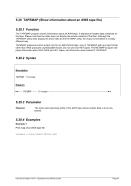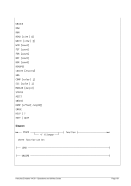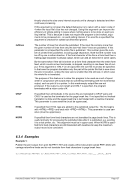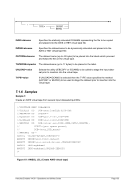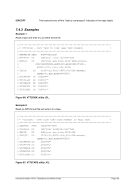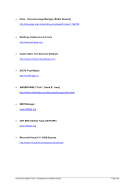5.23 VMFPLC2 (VM formatted tape utility)
5.23.1 Function
The VMFPLC2 utility is used to manipulate (create and read) VMFPLC2 (VM) formatted tape files for
VM/370 use. The utility requires a function (dump, scan, load) followed by the name(s) of the files to be
processed.
5.23.2 Syntax
Descriptive
VMFPLC2 {DUMP controlfile outputfile | SCAN
inputfile |
LOAD inputfile}
Diagram
Êʬ¬¬ VMFPLC2 ¬¬¬§¬¬¬ DUMP ¬¬¬ controlfile ¬¬¬ outputfile ¬¬¬§¬¬¬¬¬¬¬¬¬¬¬¬¬¬ÊÍ
ª¬¬¬ SCAN ¬¬¬ inputfile ¬¬¬¬¬¬¬¬¬¬¬¬¬¬¬¬¬¬¬¬«
LOAD ¬¬¬ inputfile ¬¬¬¬¬¬¬¬¬¬¬¬¬¬¬¬¬¬¬¬¯
5.23.3 Parameter
DUMP
The dump function is used to create a VMFPLC2 formatted tape.
SCAN
The scan function is used to list the contents of a VMFPLC2 formatted tape.
LOAD
The load function is used to import the contents of a VMFPLC2 formatted tape onto
the system.
controlfile
This specifies the name of a control file. The control file allows the dump function to
determine what files to dump and how they should be interpreted on VM.
outputfile
This specifies the name of the output tape file.
inputfile
This specifies the name of the input tape file.




























































































